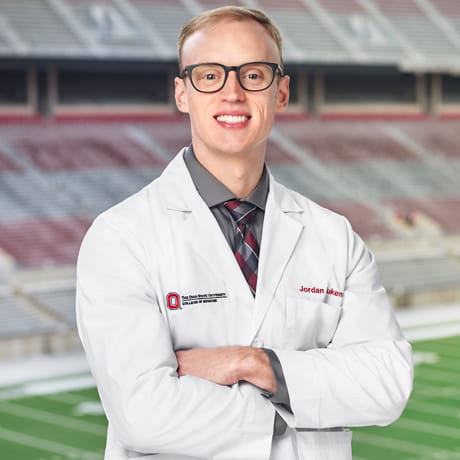
Jordan Lukens
Medical student Jordan shares the aspects of Ohio State’s curriculum and culture that made him even more excited to attend medical school here.

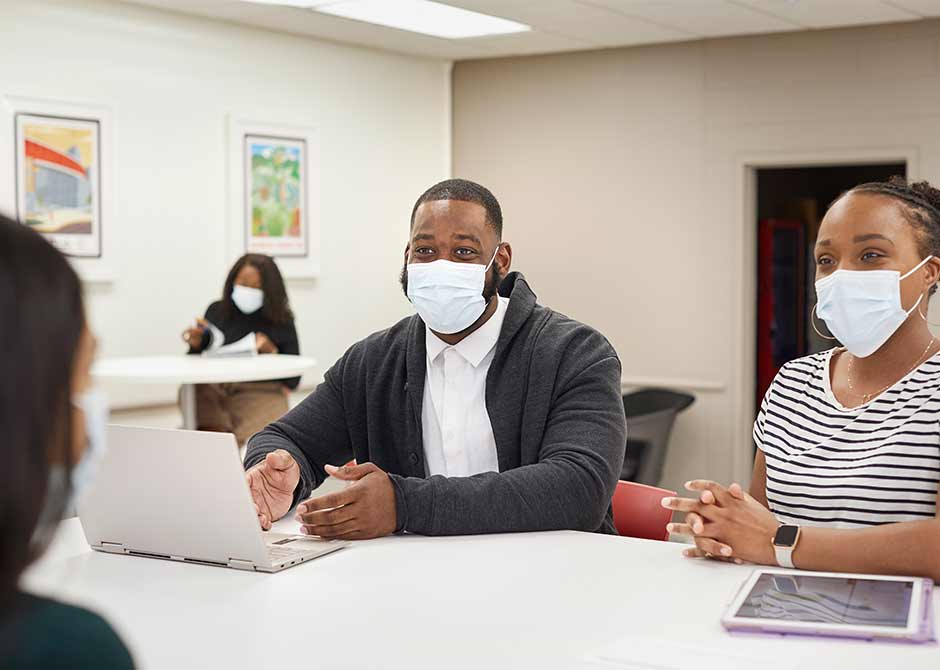 Big dreams start with a step. The Ohio State University College of Medicine breeds thought leaders and change agents. It has allowed me to dream and encouraged me to step forward and grow so one day I can assume a leadership position.
Big dreams start with a step. The Ohio State University College of Medicine breeds thought leaders and change agents. It has allowed me to dream and encouraged me to step forward and grow so one day I can assume a leadership position.
We stand tall and proud among other academic institutions with our commitment to diversity and representation. A lot of effort goes into assembling cohorts of students with diverse backgrounds, both in thought and experience, ultimately leading to dynamic learning environments. We feel that here, and we are surrounded by a close-knit community that cares and has our interests and success at heart.
All first-year students are immediately paired with a senior medical student mentor when they arrive on campus. They give us the up-and-up on life in Columbus and insight into the curriculum and range of student organizations, opportunities and resources available to us.
Throughout my time here, I often checked in with students both above and below my class to seek support or lend advice because this is the culture that is instilled in every medical student. Faculty check in routinely with students to help with our professional needs, our career aspirations, as well as our emotional needs when we encounter trials and tribulations. Intentional steps like these go a long way in making students like me feel more comfortable and confident as we traverse the rigors of medical school.
Medicine is a rapidly evolving field. I value the diversity of thought that’s shared in the classroom and the clinic because it directly influences our consideration of appropriate care for patients. Many of us volunteer at local free clinics as a means of providing care for our communities, while sharpening our clinical skills. I’m constantly learning from others and through my interactions with my peers, patients and faculty.
As students, we engage in fellowship frequently between classes in our learning communities, which are small groups that meet once a month. Action items in the groups range widely from sharing study hacks to creating new inclusion initiatives and advocacy.
Ohio State does an incredible job of supporting historically excluded and underrepresented populations of students through mentorship and student involvement. All minority students at Ohio State can receive a minority student faculty mentor, whom they can meet with as often as they request. I proudly serve on our student council as the executive chair for diversity and inclusion. Recently we created an alliance for all affinity groups whose titles fall under diversity and inclusion.
I also served as president of the Ohio State student-run organization called Health Education and Development Services for Underprivileged Populations, also known as HEADS-UP, which works with local nonprofits and schools to develop health literacy curriculums for students interested in medicine, improve health care literacy through education, provide mentorship and offer resource support for children who are in educationally, socially and economically disadvantaged positions.
One of the most memorable experiences during my didactic years was getting into clinical outpatient settings with attendings. Prior to my time with Sakima Smith, MD, MPH, FAHA, who is an associate professor of Internal Medicine in the Division of Cardiovascular Medicine at the College of Medicine, I was exploring interest in several fields. We established a working relationship where I was able to see him with his patients and how they connected together. He opened my eyes to the thought of cardiovascular medicine as a career and encouraged me to consider the specialty. Seeing the impact that he was able to make on patients’ lives, coupled with the anatomy and physiology that I found fascinating, solidified my decision. My aspirations formed to emulate a patient provider experience in my own practice as a cardiologist, similar to what Dr. Smith had successfully created.
It has been a joy to participate in Black Men in Medicine, an organization that provides outreach to young men who may lack exposure to the field of medicine. Throughout these past four years, I’ve met lots of men whom I’ve leaned on and gotten advice from. I wouldn’t be where I am today if I hadn’t been able to gain experience as a leader and mentor to others. My role as president of the organization led to me benefitting from what being part of Buckeye Nation can mean – a world-class education – and for me, getting into a top-tier residency program at Johns Hopkins Medicine.
From the time I stepped on campus to my upcoming graduation, I have had a community around me. We’ve shared raw feelings about clinical spaces and our personal lives. I’ve been able to lean on other people, people who look like me and talk like me.
My decision was Ohio State, which helped me achieve my dreams of becoming a doctor. I am excited to take the next step in my internal medicine residency at Johns Hopkins Medicine to grow my knowledge and to pursue my next dream of becoming a cardiologist.
At Ohio State, you will receive a highly respected education from world-renowned faculty who are recognized across the nation. Since 2002, Ohio State medical students have received Step 1 and Step 2 pass rates equal to or above the national average. And with an average match rate of more than 95% each year, our graduates match in some of the most prestigious residency programs in the nation. Residency director surveys show that our graduates are some of the best prepared in their programs.
Ohio State is home to some of the most welcoming, supportive and caring people who are all committed to helping you reach your full potential. With several community service opportunities and more than 50 student organizations, you will be able to pursue your passions and discover new ones.
Major components of Ohio residency for in-state tuition include:
If you choose not to establish Ohio residency, in an effort to lower student loan debt, the College of Medicine has reduced the out-of-state surcharge for third- and fourth-year medical students.
We believe the physicians we train should be as diverse as the communities they serve. Diversity and inclusion are present in everything we do, starting with our history of diversifying classes to include more women and underrepresented in medicine students and our strides in diversifying our leadership team.
Combine a lower cost of living with a thriving health care landscape creates a perfect environment for medical students or any healthcare professional. Columbus boasts four world-renowned, award-winning healthcare systems, including The Ohio State University Wexner Medical Center and Nationwide Children's Hospital.

Medical student Jordan shares the aspects of Ohio State’s curriculum and culture that made him even more excited to attend medical school here.

Through Ohio State’s MD/PhD program, Aliyah combines her passions for medicine and research as she develops new treatments for chronic pain.
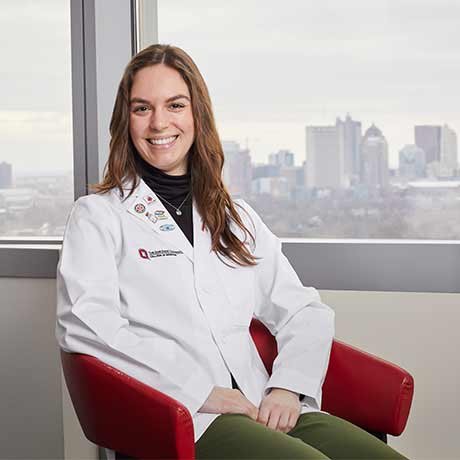
As an out-of-state student, Amanda found her home away from home and is establishing in-state residency after her first year.
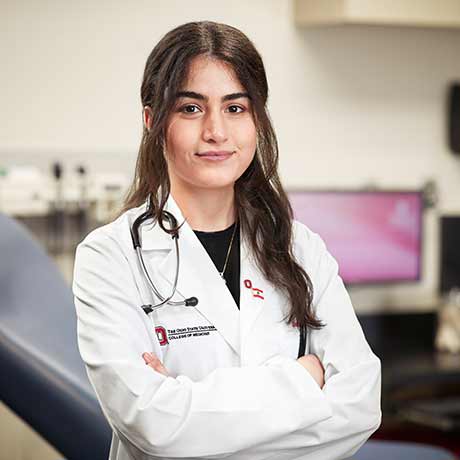
Medical student Selena shares why she chose Ohio State’s three-year primary care program as it is uniquely positioned to prepare students to enter the field of family medicine.
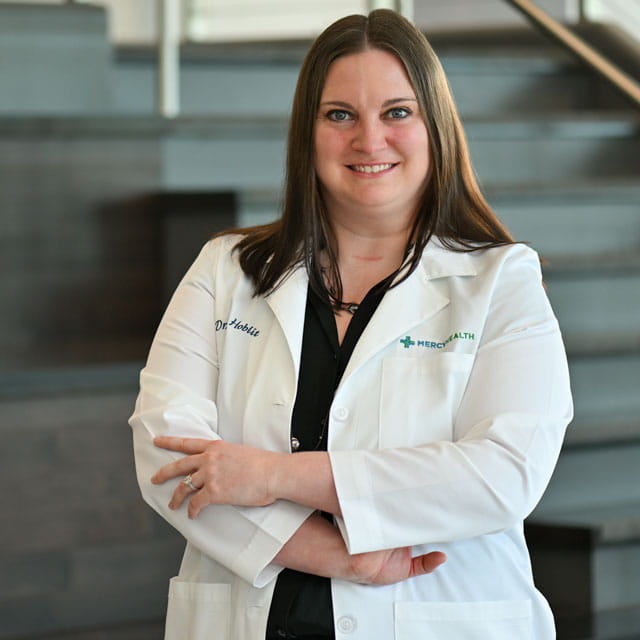
Providing accessible care in rural communities drives Dr. Hoblit’s passion for practicing family and community medicine. Learn more about Ohio State’s Community Medicine MD Track.